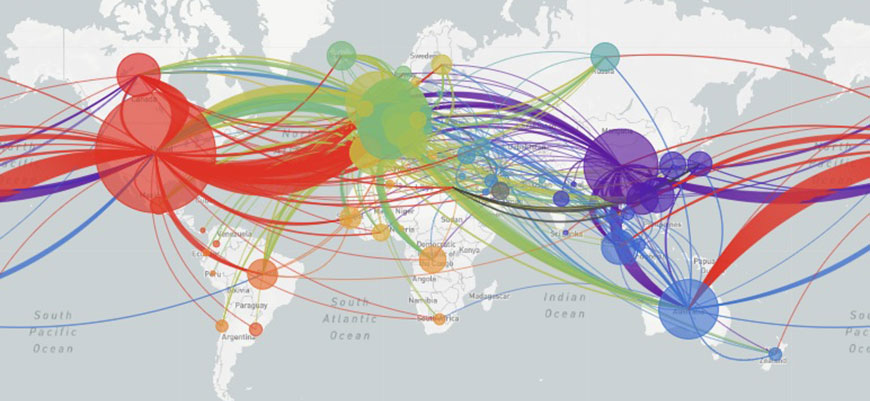
Microsoft’s tracking tool is a commendable effort to keep the public up to date in the face of fear and misinformation. With COVID-19 spreading at an unprecedented rate across the world, it’s time for everyone to pitch in. It’s unclear as to why this is the case, but hopefully Bing will continue to improve its map’s detail in the coming weeks.

Learn about Symptoms, Prevention, Travel Advisory and common FAQs on CoronaVirus.

Not every country has detailed information about where cases have been reported - right now the United States is the only part of the map with detailed information about which areas have reported cases. and threat posed by the growing pandemic of COVID-19 the Corona Virus. Room for improvement - This being said, Bing’s tracker isn’t perfect. By making its tool ultra-easy to use, Bing made its map accessible to those who need it the most. COVID-19 statistics, graphs, and data tables showing the total number of cases, cases per day, world map timeline, cases by country, death toll, charts and tables with number of deaths, recoveries and discharges, newly infected, active cases, outcome of closed cases: death rate vs. Sure, the millennial and Gen Z crowd will have no problem with these, but those with the highest risk of complications from COVID-19 - those over 60 years old - are typically less adept at using internet technology. Not the first but certainly the most user-friendly - Other reputable sources such as The New York Timesand Johns Hopkins University have been diligently tracking the spread of COVID-19 for weeks.Įach mapping tool comes with its own strengths and limitations the NYT maps show many different views and are accompanied by helpful graphics about recovery rates, while the Johns Hopkins map is highly detailed and technical.īut neither is particularly easy to navigate if you’re unused to using internet-based mapping tools or understanding graphics. Microsoft’s quick work on this tracker is commendable it’s extremely easy to use and will surely prove to be an invaluable resource for the public as the coronavirus continues to spread. Visual aids are imperative in providing a better understanding of the pandemic to the general public. The tracker, which is accessible on both desktop and mobile browsers, aggregates data from the CDC, the WHO, the European CDC, and Wikipedia. Use this map to keep track of how the virus is. The United States, India and Brazil in that order have had the most COVID cases and the three nations collectively account for almost half of all recorded infections so far in the pandemic.Įxplore the chart below to find a country-by-country breakdown of new and total cases since January 2020.This morning Microsoft launched a COVID-19 tracking tool to visualize the number of new coronavirus cases across the world. The scope of the new coronavirus outbreak continues to expand - in mainland China and around the world. Now the virus has spread to every corner of the globe and has been blamed for more than 6 million deaths. It took the globe just 7 more months to pass the 200 million mark- then another 5 months to hit 300 million, according to researchers at Johns Hopkins University. A year later, the world tallied its first 100 million cases.

In late January 2020 only a few dozen COVID-19 infections had been identified outside of China. For current data about COVID-19 cases and deaths around the world, Johns Hopkins University and Our World in Data are useful resources. Visualizing new cases demonstrates where the coronavirus actively. This approach helps prevent events like a change in reporting methods or data variability from skewing the case count.

Editor's note: This page is no longer being updated. Brazil has been the worst-hit country in the region overall, recording more than 32 million cases and 672,000 deaths - the world's second-highest official death toll. The New Cases animation uses a 5-day moving average, calculated for each day by averaging the values of that day, the two days before, and the two next days.


 0 kommentar(er)
0 kommentar(er)
